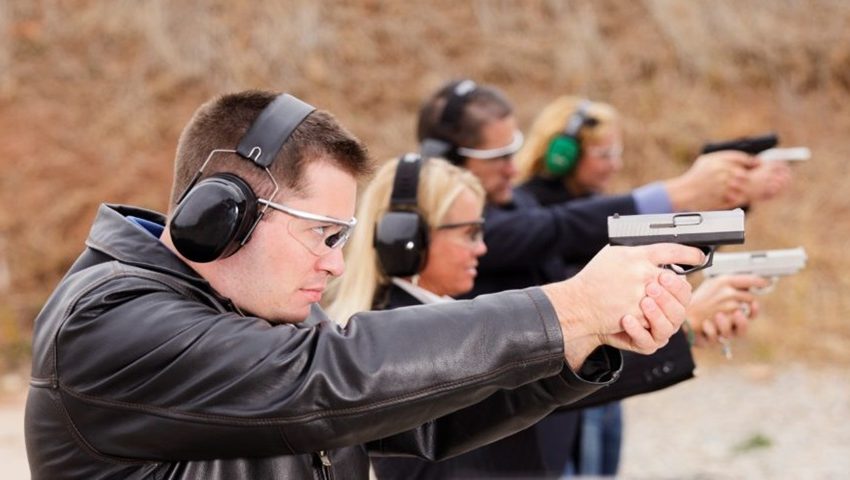Improve Accuracy with Firearms Training Tips

Accuracy is one of the most vital skills when it comes to handling firearms. Whether you’re aiming to enhance your performance for personal protection, sport shooting, or even firearm training for film, consistent practice and expert guidance can significantly improve your precision.
In this guide, we’ll dive into effective tips and techniques to sharpen your accuracy and help you become a more confident shooter.
Why Accuracy Matters in Firearms Training
Accuracy is about more than hitting the target; it’s a matter of safety, efficiency, and confidence. Proper training ensures that every shot is purposeful, reducing the risk of accidents and improving performance in any scenario, from competitive shooting to self-defense.
Start with the Basics
Understand Your Firearm
Familiarity with your weapon is the first step. Learn how it functions, its specifications, and maintenance requirements. Knowing your firearm inside and out builds confidence and control.
Focus on Safety
Accuracy begins with safe handling practices. Always keep your firearm pointed in a safe direction and your finger off the trigger until you’re ready to shoot.
Perfect Your Grip
Two-Handed Grip
Using both hands offers better control. Place your dominant hand firmly around the grip and wrap your supporting hand around the other side, ensuring a steady hold.
Avoid Overgripping
Gripping too tightly can cause tension, which impacts your aim. Strike a balance between firmness and flexibility for smooth control.
Master the Proper Stance
Balanced Foot Placement
Stand with your feet shoulder-width apart. Your dominant foot should be slightly behind the other to create a stable base.
Lean Into the Shot
Leaning slightly forward improves balance and reduces recoil impact, which directly enhances accuracy.
Use the Sight System Effectively
Align Your Sights
Always line up your front and rear sights correctly. Ensure the top of the front sight is level with the rear sight notch and centered.
Focus on the Front Sight
Your focus should remain on the front sight while keeping the target slightly blurred. This minimizes distractions and sharpens your aim.
Breathe and Relax
Control Your Breathing
Hold your breath momentarily as you squeeze the trigger. This reduces movement and helps maintain focus.
Stay Relaxed
Tension in your arms or shoulders can lead to shaky hands. Keep your muscles relaxed to ensure a steady aim.
Trigger Control is Key
Squeeze, Don’t Pull
Pulling the trigger abruptly can throw off your shot. Instead, apply slow and steady pressure until the shot breaks.
Reset Between Shots
Allow the trigger to reset naturally before firing the next shot. This improves rhythm and consistency.
Practice Dry Firing
Why Dry Firing Helps
Dry firing (practicing without live ammunition) is an excellent way to perfect your technique. It allows you to focus on grip, stance, and trigger control without distractions.
Safety First
Always ensure your firearm is unloaded before practicing dry firing. Double-check for ammunition to avoid accidents.
Incorporate Realistic Scenarios
Dynamic Shooting Drills
Static targets can only take you so far. Incorporate movement, timed drills, and varied distances to simulate real-life situations.
Use Reactive Targets
Targets that react to being hit provide immediate feedback, helping you identify areas for improvement.
Track Your Progress
Keep a Shooting Journal
Document your sessions, noting what worked and what didn’t. Tracking your progress keeps you motivated and identifies areas that need more practice.
Seek Feedback
Ask a coach or experienced shooter to observe your technique. Constructive feedback is invaluable for improvement.
Invest in Professional Training
Why Professional Guidance Matters
Even experienced shooters can benefit from expert instruction. A professional trainer can pinpoint subtle errors and provide personalized advice to refine your skills.
Specialized Courses
From defensive tactics to firearm training for film, there’s a course for every need. Choose a program that aligns with your goals and experience level.
Overcoming Common Challenges
Dealing with Recoil
Recoil is natural, but it can affect accuracy if not managed properly. Strengthen your grip and maintain a firm stance to minimize its impact.
Mental Focus
Distractions can lead to mistakes. Stay present and focused on each shot, treating every trigger pull as a learning opportunity.
The Role of Equipment
Choose the Right Firearm
The right firearm for your skill level and purpose can make a significant difference. Test different models to find one that feels comfortable and suits your needs.
Use Quality Ammunition
Cheap ammunition may save money but can compromise accuracy. Invest in high-quality rounds for consistent performance.
Final Thoughts
Improving accuracy with firearms requires dedication, practice, and the right guidance. By mastering foundational techniques, seeking professional training, and incorporating realistic drills, you can elevate your skills and become a more confident shooter. Remember, every step you take toward improvement is a step toward safety and precision.
Whether you’re training for personal defense, competitive shooting, or firearm training for film, the journey is worth the effort.

